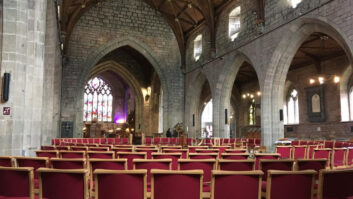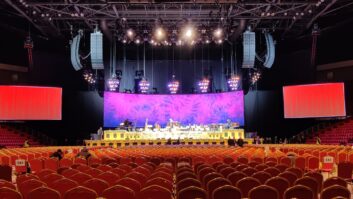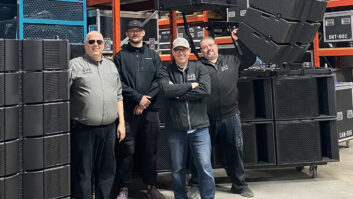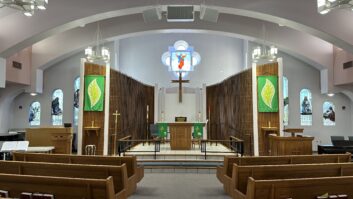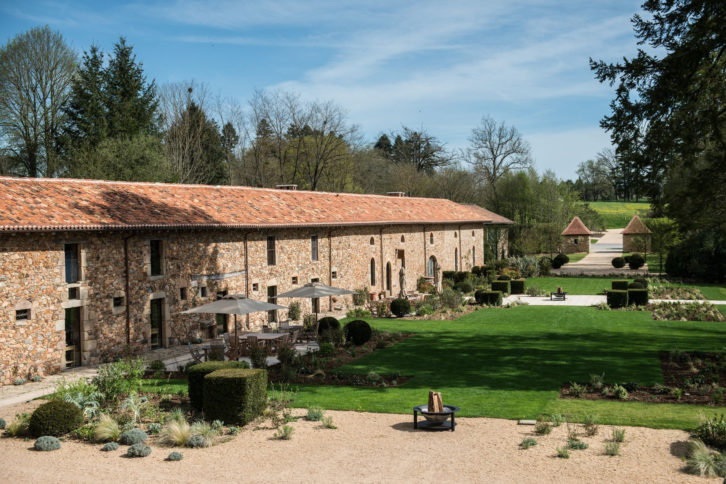
Located in Massignac, it spans a thousand acres of unspoiled natural land including forests, pastures, and ponds. The Domaine des Étangs (‘Pond Domain’) offers outstanding hospitality experiences and is the biggest five-star hotel resort in France.
This site hosts an 11th-century castle, fully renovated and decorated with contemporary works of art, detailed landscaping, six tenant farms, a former dairy (La Laiterie), a vegetable garden, a wellness centre, Gallo-Roman baths, two swimming pools, a floating tennis court, and a top-rated gastronomic Michelin-starred restaurant. Built of stone and wood, La Laiterie is a new gallery space within the Domaine des Étangs complex that is dedicated to exhibitions about the ‘Meeting of Art and Nature’.
“As we collaborated in advance of the sound system installation with Amadeus experts, we were able to get rid of the speakers’ common aesthetic nuisances and at the same time ensure a sound quality at a level rivalling the most famous concert halls,” said Manuel Gomez, architect, who was in charge of the renovation work for La Laiterie at the Domaine des Étangs.
Designed in a circular layout to get the best envelopment for visitors and to adapt to the geometric, technical, and aesthetic constraints in the Laiterie galley, the sound system comprises 44 speakers made by Amadeus and the HOLOPHONIX spatial sound processor.
“The specification was very complex. Garance Primat, the owner of the Domaine des Étangs, is a great music lover and a contemporary art collector; she wished to turn this former 18th-century barn into a place where past, present, and future art would meet to serve culture and presentation,” said Gaëtan Byk, marketing manager for the Amadeus brand.
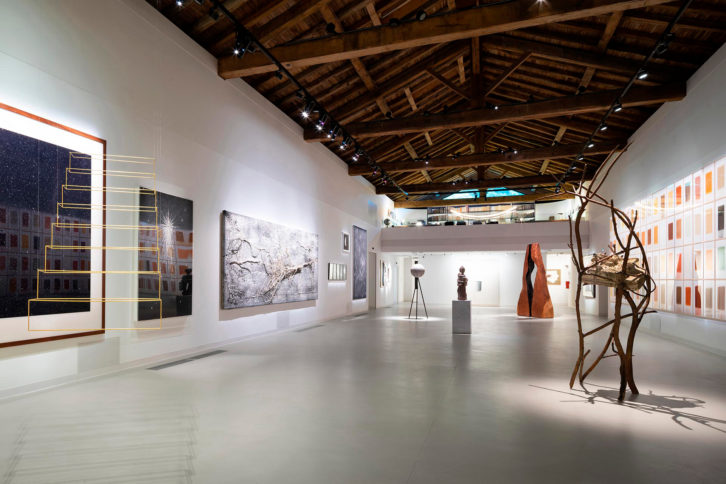
“This space had to be able to host art exhibitions, events, acoustic or amplified music, electroacoustic music creations, etc., without having to modify, reconfigure or move speakers according to the application. The sound system had to be as versatile, scalable and integrated as possible. It appeared obvious to develop our project around the HOLOPHONIX processor,” revealed Byk.
Mezzanines excluded, the hall is 23m-long and 9m-high and 32 Amadeus PMX 5 coaxial speakers are integrated at inferior purlins at mezzanine height: 10 evenly-spaced speakers lengthwise and six speakers across the width.
Eight low-frequency Amadeus ML 12 SLIM bespoke subwoofer speakers are integrated into the low section of the walls, spread out with four speakers on each side lengthwise along the walls. In addition, a new purpose-designed ‘slim bass’ speaker, named UFD 215, is integrated under each mezzanine.
The audio system is built around the spatial sound processor HOLOPHONIX. The integrated hardware and software product was designed by Amadeus in collaboration with the STMS (Sciences et Technologies de la Musique et du Son), a laboratory founded in 1995 and hosted in the IRCAM premises, in association with CNRS, the Sorbonne Université, the Ministère de la Culture, and the Institut de Recherche et Coordination Acoustique/Musique.

The HOLOPHONIX processor ensures a specified coherency between all speakers, each one receiving a dedicated audio signal. Several standard presets for HOLOPHONIX were designed on location according to the rooms’ specifications to enhance the system versatility and adaptability according to the needs of the installation or event.
The basic audio configuration uses three virtual sources, and synthesises the signal on all loudspeakers, according to the WFS (Wave Field Synthesis) principles. The first source is stereophonic, it processes the output signal of the Lumin U1 player/streamer, used to play high-resolution music tracks.
“Most audio signals come from sources like TIDAL or Qobuz. They are played in native PCM format, with sample frequencies of 44.1 to 192kHz, with 16-bit or 24-bit resolution. The AES/EBU digital audio signal is then ‘transcoded’ in Dante, to preserve the digital chain and processed at 192kHz – the HOLOPHONIX processor is set up to work with this sampling frequency, within a 64 I/O limit,” explained Michel Deluc, Amadeus’ R&D manager.


